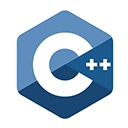The C++ Standard Template Library (STL) is a collection of template classes and functions that provide common data structures and algorithms. STL makes it easier to work with various data types and simplifies common programming tasks. In this guide, we'll explore the basics of the C++ STL.
STL Containers
STL provides various container classes that can hold and manage data efficiently. The most commonly used container classes include:
- Vector: A dynamic array that can grow or shrink.
- List: A doubly-linked list.
- Deque: A double-ended queue.
- Map: A container for key-value pairs (associative array).
- Set: A container for unique values (like a mathematical set).
- Stack: A last-in, first-out (LIFO) container.
- Queue: A first-in, first-out (FIFO) container.
Example using a vector:
#include <iostream>
#include <vector>
using namespace std;
int main() {
vector<int> numbers;
numbers.push_back(1);
numbers.push_back(2);
numbers.push_back(3);
for (int num : numbers) {
cout << num << " ";
}
cout << endl;
return 0;
}
STL Algorithms
STL provides a wide range of algorithms that can be used with containers. These algorithms include sorting, searching, and more. Some common algorithms include:
- sort: Sorts elements in a container.
- find: Searches for an element in a container.
- for_each: Applies a function to each element in a container.
- reverse: Reverses the order of elements in a container.
Example using the sort algorithm:
#include <iostream>
#include <vector>
#include <algorithm>
using namespace std;
int main() {
vector<int> numbers = {3, 1, 2, 4, 5};
sort(numbers.begin(), numbers.end());
for (int num : numbers) {
cout << num << " ";
}
cout << endl;
return 0;
}
STL Iterators
STL iterators allow you to traverse and manipulate elements in containers. Common iterators include:
- begin: Points to the first element of a container.
- end: Points one past the last element of a container.
Example using iterators:
#include <iostream>
#include <vector>
using namespace std;
int main() {
vector<int> numbers = {1, 2, 3, 4, 5};
for (auto it = numbers.begin(); it != numbers.end(); ++it) {
cout << *it << " ";
}
cout << endl;
return 0;
}
Conclusion
The C++ STL is a powerful library that simplifies many common programming tasks. It provides a wide range of containers, algorithms, and iterators to work with data efficiently. As you continue your C++ journey, you'll explore more advanced features and techniques within the STL.

